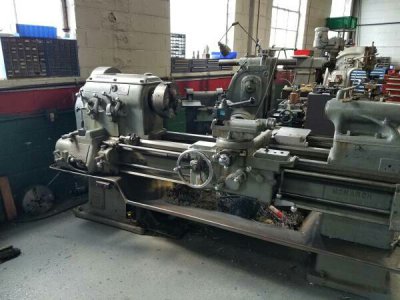What a great idea! the shell interior needs to be smooth as well, and parallel to the exterior. I can't envision an internal sanding method. my biggest concern would be achieving consistent results both interior and exterior while using two different methods. need to mull this around because your suggestion is excellent .
What I was thinking of was simply a long sanding drum on an axis parallel to the shell axis. Something like this https://www.amazon.com/Woodstock-D1...id=1479398502&sr=8-5&keywords=9"+sanding+drum, length depending on the "height" of the shells. I don't see why it wouldn't work for both surfaces.
In any case, if you had a rotating drum you could secure it on both ends of its axis, so it would be very stable and could be held in parallel with a high degree of accuracy.



 But yeah something like that is what I had in mind.
But yeah something like that is what I had in mind.